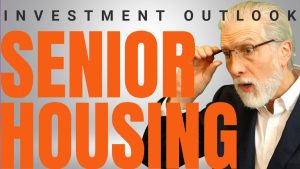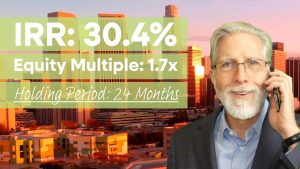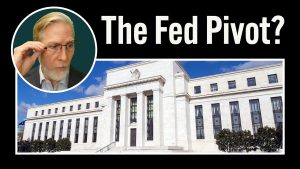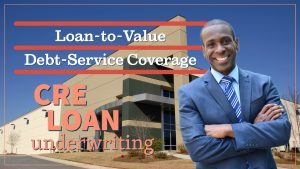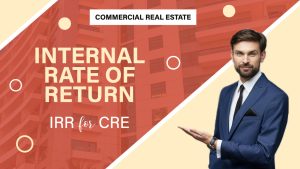Takeaways
- In the wake of a “perfect storm,” investment opportunities will abound.
- Demand for rescue capital is tied to growing distress in the market.
- Choose your place in the capital stack on a deal-by-deal basis.
The most successful commercial real estate investors over the next few years are going to be the ones that fully understand the capital stack and have the needed agility to position themselves accordingly on a deal-by-deal basis.
What do I mean by that?
Generational Investment Opportunities
Simply put, there’s going to be a tremendous amount of distress in the market. If you have the expertise and are well capitalized, you’re going to have your pick of investment opportunities in both equity and debt positions, much more so than ever before. It’s going to be a lot easier to navigate that distress and take advantage of many more opportunities if you’re agile enough to be a sponsor on some deals and a lender on others. Don’t limit your pool of opportunities by only looking to buy properties outright. The coming dislocation and illiquidity in the market is going to extend well beyond equity to both mezzanine and senior debt. If you don’t have the expertise needed to invest in real estate debt or preferred equity, seek out those partners ASAP.
A perfect storm, one that’s creating generational investment opportunities, is about to break. I’m talking about a specific set of circumstances that has fundamentally reset the market. Consider what’s happening, the new normal of remote work, higher-for-longer interest rates, banks retreating from the market, slower economic growth, property-level fundamentals that are softening for a number of property types, and most importantly, the staggering amount of loan maturities scheduled for the near term.
I’ve elaborated on all of these issues in detail over the past several months, explained how they relate to an investment thesis that’s going to catapult a lot of investment firms and their investors to great success. If you’re new to this channel, please check out some of those other videos.
Unintended Consequences of Easy Money
In short, we’ve only just recently exited an age of easy money, a 14-year stretch that was bookended by the Great Recession at the start and the COVID-19 pandemic at the end. It was a years-long monetary experiment characterized by record-low interest rates, easy credit, and tremendous growth in market share of commercial real estate financing by regional banks. However, one of the unintended consequences of easy money was a supercharged market, as cap rates compressed across property types to record levels. It flat out emboldened both investors and bankers with an appetite for risk as they underwrote real estate acquisitions.
Given that loans for commercial real estate seldom have terms longer than 10 years, and many of them have terms of less than five years, all of that aggressive underwriting is about to come back to haunt a lot of bankers and their borrowers. A torrent of those loans is going to be coming due over the next couple of years, with valuations down significantly from their recent peaks. Rate and term refinancing is going to be out of the question as these loans will no longer fit in the banks’ credit boxes. That’s going to put borrowers in a difficult situation, forcing them to either pay down their loans, sell their properties, or hand over the keys to the bank.
Rescue Capital Instead of Foreclosure
As a former banker, I can tell you that the last thing a bank ever wants to do is take back the keys. They’re not in the business of managing properties, especially ones that may be underperforming. Instead of foreclosing, the bank might be willing to allow the borrower to raise rescue capital. This typically would be in the form of mezzanine debt or preferred equity. The former, which is also sometimes referred to as a bridge loan, is subordinate to the bank’s loan, meaning that it follows the senior debt in order of payment priority. Because you’re taking on additional risk, the interest charged for a bridge loan is always going to be higher than conventional financing.
Preferred equity can also be a form of rescue capital. Of course, in this situation, you would be coming in at a much lower basis than the borrower, thereby boosting your upside potential at reversion. Plus, you have the added security of superior payment rights compared to common equity, which is the equity that represents the borrower’s ownership interest in the property. One of the definitive characteristics of preferred equity is how it simulates debt, especially when it’s offered up as rescue capital. The return is predetermined, not unlike the interest rate on a loan. In this situation, expect the preferred return, or “pref,” to be paid out on a regular basis, usually monthly or quarterly, regardless of how the underlying asset performs.
Optimal Risk-Adjusted Returns
The key to all of this is the risk-return profile. You’re going to choose your place in the capital stack based on your tolerance for risk and expectation of returns. The higher you are in the capital stack, the more risk you’re going to be taking on, although the potential for outsized returns is going to be commensurately greater because of that risk. What’s key is diversification, even within the capital stack. A basket of positions within the capital stack, across property types and regions, is going to provide optimal risk-adjusted returns over the next few years. If you can’t accomplish that on your own, find someone who can and align yourself with them.




